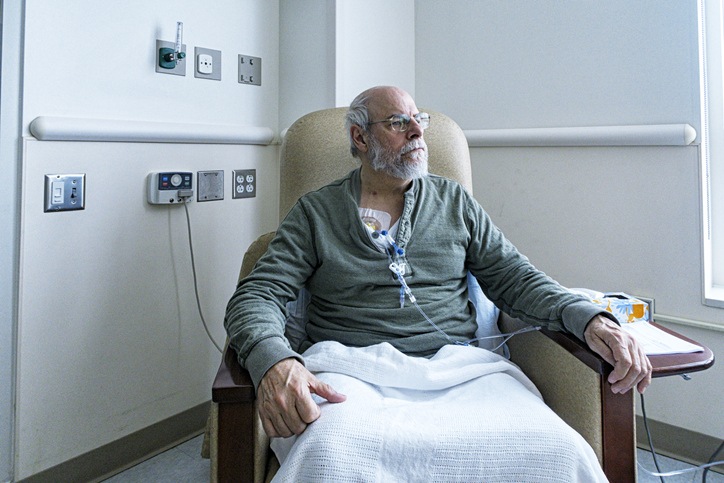
A study published in The Laryngoscope assessed different treatment modalities for patients with sinonasal diffuse large B-cell lymphoma (SN-DLBCL).
The researchers retrospectively reviewed patients diagnosed with SN-DLBCL from 2004 to 2015, identified using the National Cancer Database. They implemented Kaplan-Meier log‐rank test to assess overall survival (OS) differences by clinical covariates, and Cox proportional hazards analysis to determine predictors of mortality.
Final analysis included 2,073 patients with SN-DLBCL. The mean age was 66 years; 48% of patients were female, and 82% were Caucasian. About three-quarters of patients had early-stage disease, and nearly one-half had primary tumors in the paranasal sinuses. Patients with early-stage disease had higher odds of receiving multi-agent chemoradiotherapy versus multi-agent chemotherapy alone (P<0.001). Upon multivariable Cox proportional hazards analysis, chemoradiotherapy was associated with greater OS than chemotherapy alone (hazard ratio [HR], 0.61; P<0.001), but in a subset analysis of patients with late-stage disease, OS did not differ between chemoradiotherapy and chemotherapy alone (P=0.245).
Patients who received chemotherapy after 2012 were separately analyzed, and immunotherapy was associated with improved OS (HR, 0.51; P=0.024), but a subset analysis found that this was no longer the case in patients with late-stage disease (P=0.326). All patients treated after 2012 who received immunotherapy had improved OS compared to those who did not receive immunotherapy (P<0.001).
“Treatment protocol selection differs between early‐ and late‐stage SN‐DLBCL patients. Early‐stage patients receiving chemotherapy may benefit from immunotherapy as part of their treatment paradigm,” the study authors wrote in their conclusion.







 © 2025 Mashup Media, LLC, a Formedics Property. All Rights Reserved.
© 2025 Mashup Media, LLC, a Formedics Property. All Rights Reserved.